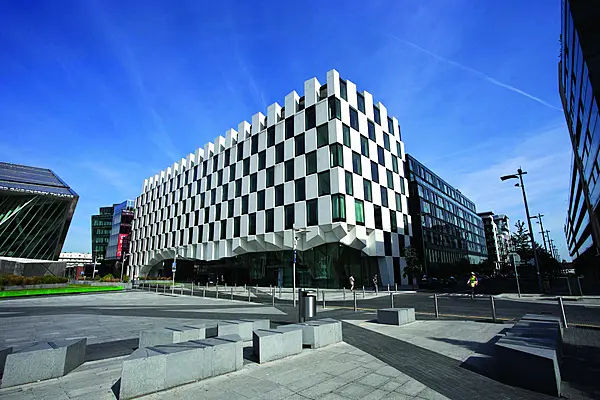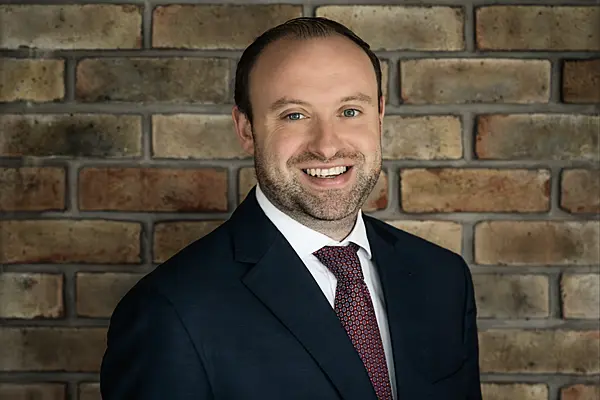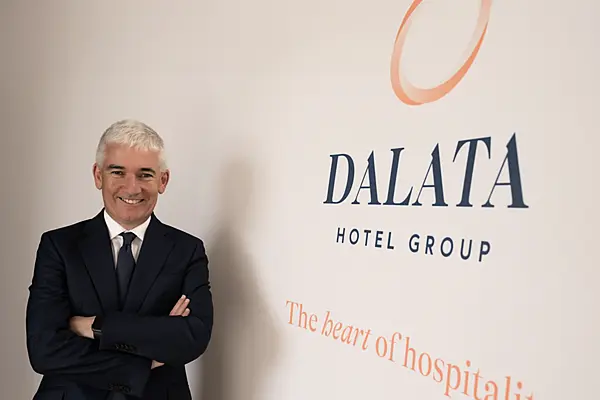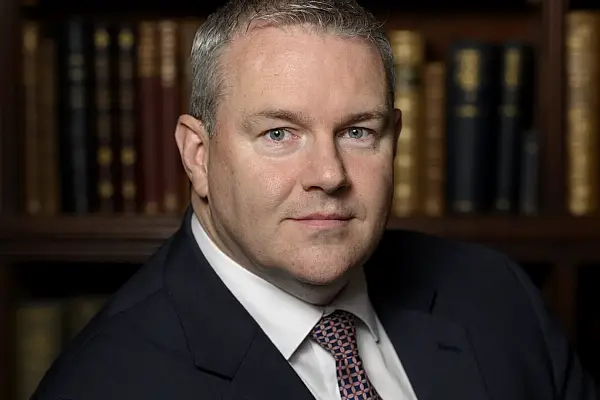Sales of hotels, particularly of landmark properties, last year confirmed a trend towards strong emerging, domestic hotel groups, such as Dalata and Lalco. Emily Hourican looks at the possible impact on the industry of these dominant Irish groups.
Just before Christmas, the Dalata Executive of Dalata, said “The acquisition Hotel Group was granted shareholder approval for the acquisition of the Moran Bewley’s Hotel Group, a portfolio of nine three- and four-star hotels comprising 2,506 rooms across Ireland and the UK, with a portfolio that includes four hotels in Dublin, two in London and one hotel in each of Cork, Manchester and Leeds. The Red Cow Moran Hotel and the Red Cow Inn Complex did not form part of the acquisition.
Once fully acquired, the Moran Bewley’s hotels will join what is already the largest hotel operator in the country, with 37 hotels and some 5,700 rooms, which translates into 9% of rooms in Ireland, and 18% of rooms in Dublin. Twelve hotels are operated under lease agreements, and 19 are operated under management agreements.
At the time, Pat McCann, Chief of the Moran Bewley’s Hotel Group is a transformational development for Dalata.”
Speaking to Hospitality Ireland in the weeks since the deal was struck, Dermot Crowley, deputy CEO of Dalata, said that the group are now ready to sit back a little in terms of new acquisitions, and focus on investment into the properties within the group. “Most of the money raised has now been spent, meaning that our objectives are very different now to nine months ago. We will spend the guts of €25 million on the portfolio of properties this year, including €8 million on the Pearse Hotel, to reconfigure the space, add new rooms and refurbish to four-star standard. Over €3 million will be spent on the Pillo hotel in Galway, and we will complete the current 98-room extension of Bewley’s in Chiswick, London, to a cost of around €10 million. On top of that, 4 per cent of profits from all the hotels will go to capital expenditure, so we’re spending a lot this year on the refurbishment and development of the existing portfolio. We spent €550 million on acquiring hotels in less than a year, now, we want to make sure we get the best return on them.”
Dalata will look to introduce a four-star brand alongside the Maldron brand, and all owned and leased properties will be one or the other. However, as Dermot points out, “By European standards, this is still a very fragmented sector. It’s great to see other Irish hotel groups buying up properties or taking on management contracts. Although the best ownership model for small towns is probably still the family-owned independent hotel, I think you will see further consolidation among the bigger hotels. It will strengthen the industry to have strong domestic groups. The groups that have money to invest in their properties, that’s great for the industry and for the economy.”
Dalata may be the largest, but are far from the only domestic hotel group operating in the country. Lalco, currently with nine hotels and hostels, over 1000 rooms and in excess of 700 employees, part- time and full-time, are significant players in the market, who plan to increase their size and scope over the next six – 12 months. “2014 was a very busy year with the acquisition of the Hilton Dublin, Westin Hotel and Limerick Strand Hotel. We are pleased with the quality of our purchases and, while it is still early days, progress has been positive since acquisition,” says Paul Higgins, finance director of Lalco, adding, “We remain on the look-out for further purchasing opportunities in Dublin and the major cities, and would hope to add another couple of properties to the portfolio.”
“There have been many trophy high-profile assets changing hands following the crash. That has been a significant change. We would like to see an industry with a strong investment base from people who have a long- term interest in the industry.” Tim Fenn, IHF
Then there is the four-strong Carlton Hotel group, and the Talbot Group, who recently bought Oriel House in Cork, adding it to their portfolio, which includes the Stillorgan Park Hotel, The Talbot in Wexford and in Carlow, and Midleton Park Hotel, another recent acquisition. Meanwhile Brehon Capital’s purchase of Jacob’s Inn hostel, to add to the Mount Juliet and Mount Wolseley resorts, the five- star Powerscourt (formerly Ritz Carlton) hotel in Enniskerry and Citywest in Saggart, as well as The Marker hotel and Killashee House, all in relatively quick succession, would indicate that there is plenty of confidence at both ends of the market.
The Regency Hotel Group, run by the McGettigan family, have the North Star Hotel in Dublin, the Royal Hotel in Wicklow, the Clanree Hotel in Letterkenny, the Limerick City Hotel, the Ambassador in Cork, as well as the Cavendish Hotel in Eastbourne, and Bonnington Towers in Dubai. They also recently bought the Maldron Hotel in Citywest and Kingswood Country House.
Press Up Entertainment, with the Dean Hotel and the Clarence, may be small in terms of hotels, but their portfolio of bars and restaurants would suggest that they understand the power and potential of group dynamics. And of course Davy Stockbroker who, on behalf of a client, have recently acquired Aghadoe Heights Hotel, the Cavan Crystal Hotel, the Fitzwilton, and Number 10 Ormond Quay.
“There always were Irish hotel groups within the market, often smaller family groups. What we have seen since the crash is a change in ownership. That said, the top 15 or 20 groups still only make up 30% of the market, and there are many traditional family groups still in operation,” points out Tim Fenn, chief executive of the Irish Hotels Federation. “There have been many trophy high-profile assets changing hands following the crash. That has been a significant change. We would like to see an industry with a strong investment base from people who have a long- term interest in the industry. People who are going to invest, assure the quality of the product, who will invest in people at staffing levels and in training. People who are going to invest in marketing and help to grow Irish tourism overseas.”
Does he feel confident that this will be so when he looks at the profile of the groups currently leading the industry? “Yes. The fact that there is on-going competition and investment in the market, these are good things. But we still have difficulties – hotels that are still in difficulty with the banks. Our hope is that the next generation of family hoteliers will be in a position to purchase the family hotel from the banks. We have come through a very difficult couple of years, we are beginning to see significant recovery in the overseas and domestic market, but it’s not uniform across the country. That is generally reflective of the domestic economy. In some places we will see that recovery, but it’s going to take a good bit of time. And then there are parts of the country that, through inappropriate planning or investment, where there won’t ever be a full recovery in the hotel market.”
Urban-rural divide
“Rural Ireland faces enduring challenges, with considerable population movement from rural to urban,” he continues. “That’s why tourism as an industry is so important.
It helps to retain the economy of towns that wouldn’t be attractive for investment from elsewhere.”
This idea of a two-tier recovery, although unfortunate, is not new. And the facts indicate that it will not change in a hurry. Tom Barrett, head of Hotels & Leisure Ireland for Savilles, begins by expressing confidence in the recovery. “I think in terms of trade it’s going to continue to recover and strengthen. In Dublin that means a rise in average room rates rather than occupancy – that’s already quite high. Dublin is back to good, strong 80% occupancy for most properties. The average room rate has recovered, but is still along way from where we were. If you look at other European cities – comparable ones, not London, Rome or Geneva – Dublin hotels are still relatively cheap compared with those cities.”
So, we’ve had three or four good years. What now? “You don’t want to see it go too fast, too far, either,” he cautions. “Industry has talked about the need for more supply in the market. Certainly there is development around the city. Cranes are appearing on the skyline for new office blocks and residential units, so why not hotels too? Outside of Dublin: Cork has been growing rev par consistently over last few years, Galway too. Limerick has been hardest hit in terms of supply and economics, but in 2014 it had the strongest rev par growth of the cities. Is that the effect of the City of Culture? Perhaps, but it’s economics really. A rise in foreign investment, US tourists, UK tourists, domestic spend. It’s happening throughout Ireland – new car registrations, retail sale improvements, especially when you factor in on-line spending, people might now be going away for weekends again. And there are less of the deals, Groupon etc, to be seen. It’s a more sustainable business. Killarney has been steadily rebuilding its brand and had a good year in 2014. There’s a reasonable US element to business there, and that helped. But yes, there are pockets where there is no or low growth, and that can be combination of the local environment (no tourists), and individual hotels.”
Capital spending is a big issue just now. During the years of austerity, there was almost no scope for this, and indeed, the evidence was there to be seen in increasingly shabby hotel rooms, public areas and external surfaces. In a way though, the across-the-board nature of the lock-down on spending, meant that comparisons weren’t easily drawn. If all hotels looked a bit faded, a bit the worse for wear, there was no unfavourable contrast to be made. Now, however, two very distinct tiers of hotels are emerging, with marked differences between those that can afford to put money back into the product, and those that can’t. “There is a need for investment,” Tom Barrett points out. “And we are already seeing a big difference, a gap, between those that can spend and those that can’t.
At the start of 2008/9, most hotels cancelled all capital investment, cut staff, cut wages, cut marketing and so on. Then, banks started taking control — receivers were appointed — and there was no spend really. Then, the realisation came with many banks, including NAMA, that they were going to have these hotels for a while and that investment was needed if they were to trade. Now, you have new buyers in the market, and their thinking is, ‘well, I’ve spent X amount acquiring the hotel, if I spend an extra 10% to do the place up, make it more comfortable, bring it up to date, that is money well spent. At the extreme end of that you have places like Ashford Castle which is getting an upgrade to the tune of millions. But even at the more modest end, new carpets, new sofas, flatscreen Tvs, the absence of these things will be noticed. The groups of hoteliers who weren’t ever in receivership, they are starting to reinvest again. It is consistent that when a hotel is bought, there is some investment. And so, many hotels are in better shape now than they were 10 years ago: they look sharper, cleaner, and as a result, business is up.”
Two-tier hotel industry
There is, he emphasises, a divide between those who can generate the cash to reinvest, and those who can’t. “There is a risk there. When you see a box TV rather than a flatscreen, it’s like seeing a cigarette burn on a sofa in a lounge after the smoking ban. Suddenly, you knew that you needed to replace it because it would be entirely obvious that it pre-dated the ban, even if the rest of the sofa was in perfectly good condition. A box TV set, even if its less than 10 years old, looks odd. Such is the march of technology.”
Such indeed. Nothing advertises its age quite so blatantly.
Some people balance this by service,” Tom goes on. “If the service is very good, people will put up with, for example, a bedroom with furnishings that are quite old, so long as they are clean and well- maintained.”
As for the emergence of strong domestic hotel groups, he points out that, “before, you had brands – Radisson, Hilton, Maldron, for example – all owned by different people, but managed and leased by the brands. Now, you have different hotels, some with different brands attached, but owned by the same people. When the crash came, because of the tax incentives and a system whereby people owned hotels in personal names, ownership fragmented and operation fragmented. Now you have operational and ownership consolidation.
But, it is still a pretty fragmented industry.” That said, recent transactions – the pace and value – clearly indicate confidence in the market, and the kind of consolidation being seen will have an effect on purchasing power, economies of scale, payroll rostering, capital expenditure – “the more you do, the more efficiently you do it,” as Tom puts it.
“The global hotel industry keeps refining itself,” Tom says. “Like a car.”
As for the international hotel chains, he feels that Ireland is still under-represented, “particularly in the budget sector. There is room for more there, with Dublin being the main opportunity of course.”
Future possibles
For Paul Higgins of Lalco, the possible advantages to strong Irish hotel groups, from a consumer point of view, are evident: “I think there are opportunities across all the hotels, across common management, to find efficiencies and share best practice, and that should benefit consumers.” From an industry perspective, does the emergence of strong domestic groups make the sector feel more solid? More resistant to outside forces? “I think difficult to make a call on that. The industry has seen a lot of change in last five or six years. I wouldn’t be sure that the structure of it now, will be fixed for any particular period of time. There will always be a degree of movement in it. The international hotels now coming in, that is more about being able access international markets with a brand. It isn’t one size fits all, hotels don’t have to be branded, and there will always be room for one or two top-end unbranded hotels, but I think the brand does bring in a certain amount of international leisure and corporate activity.”
Finally, does he see potential for different hotel groups to work together, to some extent?
“I think there is potential, but it’s limited. We operate in the same market and are competitors, to varying degrees. Selling Ireland as a destination or particular locations within Ireland, yes, there are opportunities within that to work together. That is something that happens already, and will continue, might even work better with these emerging groups, but it also comes down to individuals on the ground. It will still be a question of rowing in behind tourism officials, and trying to work with them, rather than being driven individually.”
Last year, 63 hotels changed hands, at a total sale price of just over €341 million. So far this year, there are seven hotels on the market, all regional, all profitable, according to selling agents CBRE. Together they have an estimated value of over €35 million, and will sold separately, in blocks, or as a group.
The highest value hotel going on the market is the Glenroyal Hotel & Leisure Centre in Maynooth, Co Kildare, which has a price tag of €10.5 million, and was previously owned by Ray Grehan – the developer who will be forever remembered for paying a whopping €171 million for the 2.04-acre former UCD Veterinary College in Ballsbridge back in 2004.
The four-star, Georgian-style country house hotel, Johnstown House Hotel & Spa, beside Enfield, Co Meath, has 126 bedrooms, and is guiding in excess of €6.5 million.
Both the Metropole on MacCurtain Street in Cork and Fels Point Hotel in Tralee, Co Kerry have guide prices of over €4 million, with strong roots within the local communities.
Meanwhile the three-star Maldron Hotel at Bamstown, Wexford is to be sold as an investment. The agents are quoting a guide price of €3.5 million for the 108-bedroom hotel, which is leased to the Dalata Hotel Group for 25 years dating from December 2002, at a current rent of €300,000 per annum. The Killeshin Hotel on the outskirts of Portlaoise town has a guide price of €3 million, while the South Court Hotel in Raheen, Limerick, with conference facilities capable of accommodating up to 1,200 people, is guiding €2 million.
All seven hotels are undoubtedly attractive prospects, and what happens to them will have a further determining effect on the shape of the industry, depending on whether they go to domestic or international purchasers.
Ultimately, it looks as if strong local brands and groupings may be something that benefits consumers and the industry itself. After all, anything that leads to commitment, investment and a longterm view of the potential of the sector, is clearly a good thing. The placing of opportunity in the hands of those who will invest and aspire across all levels of a hotel, from physical refurbishment to staff training, means an industry committed to going forward and thinking big.












